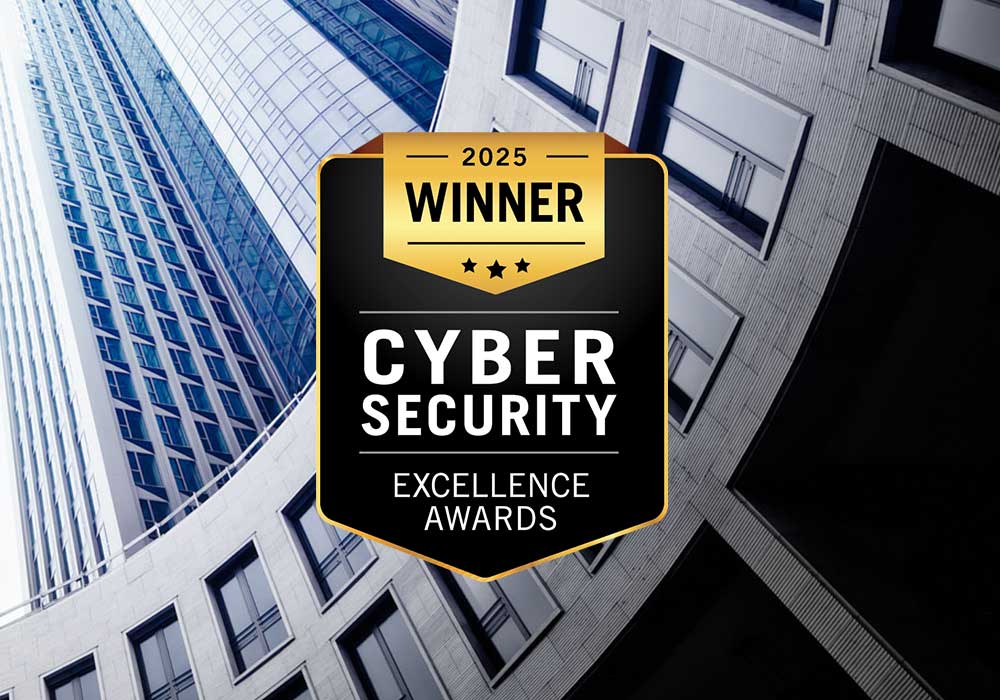What is Zero Trust Endpoint Security, and why does your business need it?

Are your current security measures enough to protect your business from modern cyber threats? If not, you may need to adopt the latest security measures, such as Zero Trust Security.
In 2023, 73% of businesses were affected by ransomware attacks, which is a form of endpoint attack.
To stop these attacks, enterprises must implement zero trust security throughout their IT infrastructure. Zero Trust Architecture is a digital security methodology that assumes no single user can be trusted due to the intertwined nature of technologies today. With a no trust, or "zero trust" position as the assumed default, companies then use various authentication and check points to continuously check on that individual's digital behavior. If a malicious entity has taken over that person's credentials, or there is misuse of the authenticated connection, zero trust can help detect and block such cyber security threats.
With that said, let’s dive into this topic.
What is Zero Trust Endpoint Security?
Traditional security models like VPNs rely on the assumption of a secure network perimeter. However, this approach is vulnerable to breaches because if an attacker gets access to a single endpoint or user password, it will have unrestricted access to the whole network.
In such a scenario, a Zero Trust approach can protect the company by thoroughly verifying every single person or system that wants access to endpoints, such as workstations, laptops, and mobile devices. It implements strict access controls and verifies at every step to reduce the chances of a successful attack.
According to Fortune Business Insights, the market for global zero-trust security was $31.45 billion in 2023 and is expected to grow to $95.22 billion by 2030.

Zero Trust Endpoint Security is a modern security approach that ensures that all the devices (endpoints) trying to access your network are verified and continuously monitored to prevent data breaches.
Why Zero Trust Security Protocol Matters
Zero Trust Endpoint Security aims to minimize the risk of unauthorized access and data breaches, ensuring that every connection is secure and verified. This way, even if a hacker manages to get into your network, they can't easily move around or access sensitive information.
Lastly, Zero Trust Endpoint Security provides an extra layer of protection to enhance the security posture of your IT infrastructure. This makes your business much safer from cyber threats and makes it easier for you to mitigate cyber threats.
Principles of Zero Trust Endpoint Security
This security protocol is in place to fortify your defenses against endpoint cyberattacks.
According to Gartner, 60% of organizations will endorse Zero Trust Security principles and use them as a starting point in their security by 2025.
The three key principles of zero trust security are:
1. Continuous Monitoring and Validation - In a Zero Trust model, all network assets are inaccessible by default. This means that all users, devices, and workloads must undergo continuous contextual authentication and validation to access any resources. Dynamic access control policies are in place to evaluate data points and determine whether to approve requests.
These include user privileges, physical location, device health status, threat intelligence, and unusual behavior.
2. Assume Breach - In ZTE, the mindset shifts to assuming that hackers have already breached the network. This stance means that actions generally reserved for cyber-attacks become standard operating procedures.
For instance, the IT team implements network segmentation to contain potential attacks, continuously monitors every asset, user, device, and process across the network, and responds in real-time to any unusual behaviors.
3. Least Privilege Access - In the Zero Trust environment, the principle of least privilege means that users and devices have minimal access to resources, just enough to complete their tasks or fulfill their roles. These permissions are temporary and are revoked once the session ends. This strict management of permissions limits the ability of threat actors to move laterally within the network.
Features of Zero Trust Endpoint Security
Additional features of ZTA include:
1. Ringfencing™ - Reduce the chance of a cyber-attack by fencing in your applications and limiting what they can do, whether it’s interacting with another application, your files, data, or the internet.
2. Allowlisting - Deny all applications from running except those that are explicitly allowed. Untrusted software, including ransomware and other malware, will be denied by default.
3. Data Storage Control - Have policy-driven control over storage devices, whether the storage device is a local folder, a network share, or external storage such as a USB drive.
4. Elevation Control - Provides an additional layer of security by allowing IT administrators to remove local admin privileges from their users while allowing them to run individual applications as an administrator.
Limitations of Traditional Perimeter-Based Security
Traditional security protocols work around a fixed perimeter which means they cannot detect threats that have evolved. There are many limitations of these traditional perimeter-based security systems which we will discuss ahead.
1. Assumes Trust within the Network - Traditional security measures operate on the assumption that all the devices within the network can be trusted. This approach can be devastating for businesses if an attacker manages to enter the network. Because after it's inside, the attacker has a free pass to move anywhere within the network and access any information.
2. Inadequate for Modern Work Environments - Now that remote work and cloud services are on the rise, this traditional perimeter-based security needs to be improved. Employees who work from home usually access the network from multiple devices, which makes it extremely difficult for this protocol to identify each device and provide adequate protection.
3. Static Defenses - Perimeter-based security relies on static defenses, which means it doesn't have the capability to adapt to new threats in real-time. These defenses usually include a firewall and intrusion detection systems, which are insufficient on their own and are only one part of a layered defense in this era of advanced threats. Cyber attackers are continuously evolving, and because of that, these static defenses have become ineffective on their own against sophisticated attacks. Each layer brings its own aspect of security, which together will improve security overall.
4. Limited Visibility - These security measures don't watch over the activity happening within the network. Because of this, the security might not flag any threats that have bypassed the perimeter or the ones that are originating from inside the network. For instance, insider threats or compromised internal devices cannot be detected by traditional security systems.
5. Reactive rather than Proactive - Perimeter-based security solely focuses on preventing attacks that are happening outside the network. It doesn't have the ability to detect and respond to threats that have already penetrated the network. This means that it only works when a security breach has already occurred, and it cannot detect those breaches before they happen to minimize the damage.
6. Inconsistent Security Policies - Applying a consistent security policy across all devices and endpoints is difficult, especially for those working remotely. This could cause a security gap that experienced hackers can easily breach.
7. Insufficient for Advanced Threats - Advanced persistent threats (APTs) and targeted attacks can easily bypass perimeter defenses by exploiting vulnerabilities in user behavior, social engineering, and zero-day exploits. Traditional security systems most organizations use are insufficient in detecting and mitigating these threats, although they are an integral part of having layered defenses.
Why Does Your Business Need Zero Trust Endpoint Security?
According to a recent study by the Ponemon Institute, 68% of organizations experienced at least one or more endpoint attacks in 2020, which caused data breaches and were harmful to their IT infrastructure.
According to the IBM Security® Cost of a Data Breach Report 2023, studies estimate that as many as 90% of successful cyberattacks and as many as 70% of successful data breaches originate at endpoint devices.
Businesses nowadays need even more protection to keep themselves safe from incurring huge losses. Implementing one single policy across all devices and continuously monitoring them for any suspicious activity has become absolutely necessary. This is where Zero Trust Endpoint Security comes into play.
Now that you know why your business needs one of these security protocols, let's check out the benefits it can provide to your business.
How Zero Trust Endpoint Security Benefits Businesses of All Sizes
Zero Trust Endpoint Security can benefit businesses and keep their sensitive information secure by providing:
1. Improved Protection Against Malware, Ransomware, and Phishing Attacks - This security protocol offers advanced threat detection and response capabilities. It improves your protection against malware, ransomware, and phishing attacks.
Nearly 7 million detections of phishing attacks were recorded in 2023. However, with Zero Trust, this number will decrease significantly in the future.
2. Reduced Risk of Lateral Movement Within the Network - One of the significant advantages of Zero Trust is its ability to reduce the risk of lateral movement within the network.
For instance, even if an attacker manages to breach one endpoint, Zero Trust works its magic and ensures that the threat cannot easily move to other parts of the network. By using this strategy, the impact of security incidents decreases considerably.
3. Enhanced Data Security and Compliance - As you already know, Zero Trust Security enhances data security and compliance. It ensures that only authorized individuals and systems can access sensitive information. This level of control is necessary for your business to comply with various regulations and standards such as GDPR and HIPAA.
4. Better Visibility and Control Over Endpoints - With Zero Trust, businesses gain better visibility and control over all connected devices. This system gathers detailed insights from all the connected devices by continuously monitoring them. This way, if the system detects that something is compromised, your IT team can respond quickly and resolve it before it causes any damage. This improved visibility also assists in managing and securing endpoints more effectively.
5. Increased Resilience Against Insider Threats - Unlike traditional security systems, Zero Trust can also protect you against insider threats, whether they are intentional or accidental. It does so by enforcing strict access controls and continuously monitoring user activities. This way if your organization suspects any suspicious behavior by a verified entity, you can quickly respond and minimize risk of exposure.
6. Simplified Security Management - Lastly, Zero Trust Security makes it easier to implement security policies across all the connected devices and users. This reduces the complexity of managing disparate security solutions. Additionally, it ensures a consistent security posture throughout the organization.
How to Implement Zero Trust Endpoint Security
First, assess your current security step to find where it is lacking and identify the devices that need extra protection. After that, establish security policies that no user should be trusted and implement across all devices.
Strong authentication methods like multi-factor authentication (MFA) ensure that users prove their identity before accessing the network. After that, the principle of least privilege access is applied, giving users and devices only the permissions they need to perform their tasks.
This decreases the risk of unauthorized access. Lastly, deploy Endpoint Detection and Response (EDR) tools. EDR continuously monitors and analyzes all activities on your organization’s devices. Keep it up to date, and it will help you detect and mitigate any threats before they become an actual problem.
Secure Your Endpoints with Claro's Zero Trust Endpoint Security Solution
Zero Trust Endpoint Security is necessary for all organizations that store, process or transmit sensitive information. Continuously verifying and monitoring all devices and users offers improved protection against all kinds of cyberattacks. Implementing Zero Trust is a proactive step towards a strong and reliable security posture for your business.
Is endpoint security a concern for your organization? Learn how Claro can help.
Our team specializes in implementing Zero Trust Endpoint Security solutions in your IT infrastructure. We offer managed services, in which our in-house experts handle endpoint monitoring and management as part of your internal security team.
We also provide self-managed services that allow your IT department to fully access our Zero Trust solution features and manage according to your policies.
Contact us today if you're ready to improve your cyber security environment.
Insights
All the solutions for your business sector
Experience best-in-breed technology solutions.
Cyber Security

Cloud Services

Internet of Things

Managed Network

Managed IT Services

.png)


.png)






.jpg)